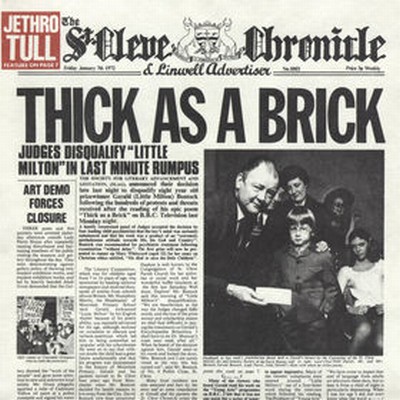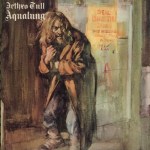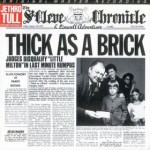More of the Music of Jethro Tull
Hot Stamper Pressings with Exceptionally Tubey Magical Guitars Available Now
Thick As A Brick is quite possibly the BEST SOUNDING ALBUM Jethro Tull ever made. It’s dynamic; has really solid, deep punchy bass; transparency and sweetness in the midrange; Tubey Magical acoustic guitars and flutes; in other words, the record has EVERYTHING that we go crazy for here at Better Records. I can guarantee you there is no CD on the planet that could ever do this recording justice. The Hot Stamper pressings have a kind of MAGIC that just can’t be captured on one of them there silvery discs.
Amazing Acoustic Guitars
Acoustic guitar reproduction is superb on the better copies of this recording. The harmonic coherency, the richness, the body and the phenomenal amounts of Tubey Magic can be heard on every strum.
- More reviews for our Tubey Magical acoustic guitar Demo Discs
- More records that are good for testing Tubey Magical acoustic guitars
A Real Gem
When we do these shootouts we play quite a few original copies of the record (the reissues are not worth the vinyl they’re stamped on) and let me tell you, the sound and the music are so good we can’t get enough of it. Until about 2007 this was the undiscovered gem (by TP anyway) in the Tull catalog. The pressings we had heard up until then were nothing special, and of course the average pressing of this album is exactly that: no great shakes.
With the advent of better record cleaning fluids and much better tables, phono stages, room treatments and the like, some copies of Thick As A Brick have shown themselves to be simply amazing sounding. Even the All Music Guide could hear how well-engineered it was.
We Love the Complexity
When you can hear it right, the music really comes to life and starts to work its magic. All the variations on the themes separate themselves out. Each of the sections, rather than sounding repetitive or monotonous, instead develop in ways both clever and engaging. The more times you listen to it the more nuances and subtleties you find hidden in the complexity of the music. (Just the number of time-signature changes on either side is enough to boggle the mind. Of course, if you listen very carefully you can hear that most of them are accompanied by edits, but it’s fun to listen for those too!)
Simply put, the more you play it the better you understand it and the more you will like it. (This is of course true for all good music.)
Commoner’s Crown
We happened to do the shootout for Thick as a Brick the same week as Commoner’s Crown, and let us tell you, those are two records with shockingly real dynamics in the grooves of the best copies. If you like your music loud — which is just another way of saying you like it to sound LIVE — then the better copies of either album are guaranteed to blow your mind with their dynamic energy and power.
It’s the Engineer?
That can’t be a coincidence, can it? Well, it can, but in the case of these two albums it seems it isn’t. The engineering for both records was done by none other than Robin Black at Morgan Studios. Robin co-produced Commoner’s, takes the main engineering credit, and is solely credited with the mix. He is the sole engineer on TAAB (along with lots of other Tull albums, including Benefit and Aqualung).








 More of the Music of Jethro Tull
More of the Music of Jethro Tull Jethro Tull Albums Available Now
Jethro Tull Albums Available Now
 More of the Music of Jethro Tull
More of the Music of Jethro Tull